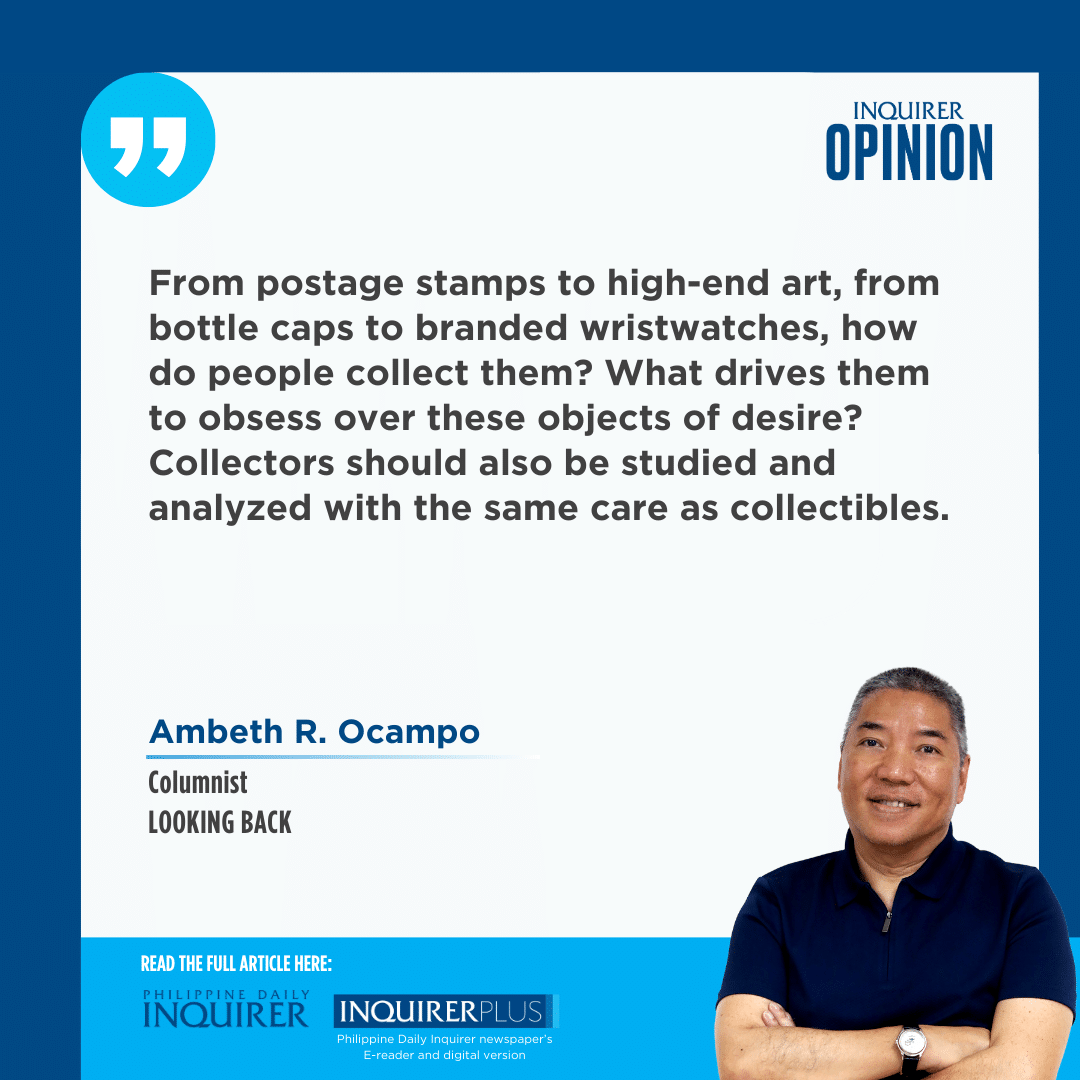Objects of desire
Freud is my constant travel companion, a small stuffed doll who figures in my social media posts. Before I learned to take selfies, especially the “point five” type I learned from my undergrad students, travel snapshots usually consisted of Freud. When I find myself in an “Instagrammable” tourist spot, I look for an Asian and request that person to take my photo. Westerners will just take one, often bad, photo but an Asian will take more than one, using different angles, and even ask you to check if they got it right.
Freud was a souvenir from Vienna. I chose the Freud doll over the Mozart doll because with his black suit and spectacles he resembled Jose Rizal’s bosom friend Ferdinand Blumentritt. As I brought the doll to the cash register, I contemplated calling him “Ferdie” or “Bloomie.” When I handed my credit card to the shopkeeper, she smiled and remarked, “he is cheaper than psychotherapy.”
Sigmund Freud always comes to mind when I look at the odds and ends I have collected over the years, mostly art, books, and canvases (ABC), acquired long before prices for these reached investment-grade levels. Many people cannot believe I started collecting as an undergraduate student on allowance, but that was 40 years ago when collecting was a hobby, not a financial portfolio. Most people will not discern order from the clutter that defines my work, space but the real Sigmund Freud would. He was an obsessive collector of antiquities as seen in the objects displayed in his London home now a museum whose main attraction is the couch where his patients lay and poured out the stories that went into the development of modern psychoanalysis.
Psychiatrists who visit the Freud Museum often analyze the man’s collection. After all, Freud believed that collectors and collecting was rooted in difficulties in toilet training. He also collected objects to release tension or boredom. Reading on archeology was his pastime. The way Freud displayed collectibles was not just the expression of a sense of order, but rather a way in which he imposed order in his world. Freudian psychology, often been caricatured as reducing everything to sex and libido, has led to some amusing angles. Was Freud displacing excess libido on the inanimate objects he collected?
What would Freud say about philatelists, stamp collectors who chase and obsess over small pieces of paper? Jose Eleazar R. Bersales is a test case. A man who wears many hats, and I say that both literally and figuratively. When he is not lecturing as an academic professor-doctor of anthropology, he forages in Japan surplus stores for porcelain and manual typewriters. In 2014, he came out as a closet numismatist when “Salapi,” his comprehensive book on Philippine money, saw print. Collecting, it seems, is in his genes. A grandfather and granduncle were stamp collectors and it is this from this personal connection that he drew both experience and inspiration that brought forth “Colonial Philately” a handy one-volume reference on Philippine postage stamps.
Bersales presents stamps as markers in the complicated history of the Philippines under four flags: Spanish from 1565-1898 (with a brief interlude under the British from 1762-1764); American from 1898-1946 (with a sorry wartime interlude under Japan from 1942-1945); and of course the First Republic born in Malolos in 1899, recognized belatedly in 1946 as a free and independent nation. He begins with the first letter posted from Cebu in 1565, sent by Miguel López de Legazpi, that traveled to Spain via Mexico and arrived at the hands of Philip II in Madrid in 1566. In the book, we are presented with a series of names and faces from Isabel II, Alfonso XII, and Alfonso XIII that should rightfully end with Ferdinand Marcos Jr., but alas, the book only runs up to post-World War II stamps.
Why bother with yet another book on postage stamps, when these have become obsolete in the age of email and texting? With the dwindling number of Filipinos sending “snail mail,” I am told that postage stamps today are largely produced for philatelic purposes—for collectors. In its heyday, postage stamps, like currency and coins, served as the calling-card of the country. Minute pieces of adhesive paper that we see but rarely notice actually carries our DNA, more so if you licked the back of the stamp to attach it to a letter or parcel. Postage stamps carry the name of our country, they carry representations of Philippine history. Postage stamps are silent markers of national identity. “Colonial Philately” is Bersales’ first book on stamps, let’s hope it’s not the last. And while we are at it, someone should write a book on what drives people to collect things. From postage stamps to high-end art, from bottle caps to branded wristwatches, how do people collect them? What drives them to obsess over these objects of desire? Collectors should also be studied and analyzed with the same care as collectibles.
—————-
Comments are welcome at aocampo@ateneo.edu

















